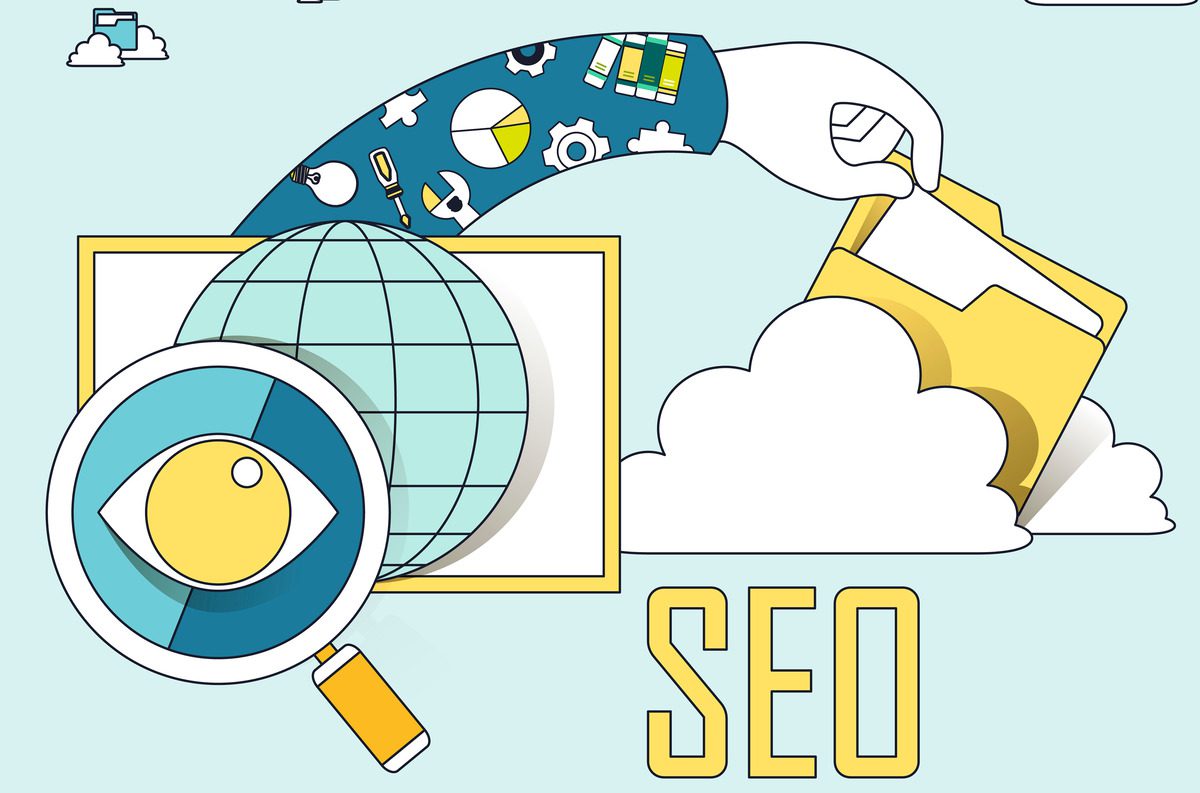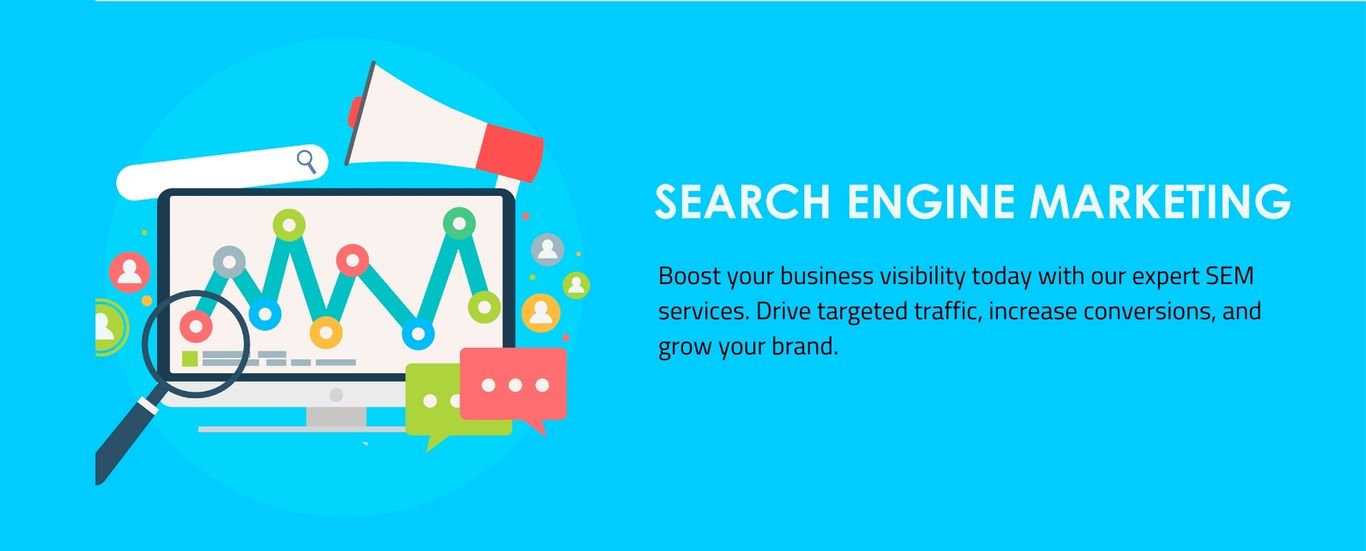In today’s digital world, getting noticed online is crucial for any business. However, with countless strategies available, it can be overwhelming to choose the right one. Two of the most prominent methods for boosting online visibility are Search Engine Optimization (SEO) and Search Engine Marketing (SEM). Though these terms are often used interchangeably, they serve different purposes in your digital marketing strategy.
In this article, we will explore the key differences between SEO and SEM, their benefits, and how you can leverage both to grow your business. Whether you’re a business owner or content creator, understanding the nuances between these two strategies can help you make more informed decisions about your marketing approach.
Why This Topic is Important
For businesses aiming to improve their online presence, SEO and SEM are indispensable tools. Understanding how they differ and how they complement each other will enable you to create a more effective, holistic strategy. Whether you’re looking to drive organic traffic or pay for quick visibility, knowing when and how to use each technique is essential for success.
SEO vs SEM: What’s the Difference?
To start, let’s break down the fundamental differences between SEO and SEM.
What is SEO?

Search Engine Optimization (SEO) refers to the practice of improving your website’s ranking in search engine results pages (SERPs) through organic methods. SEO focuses on optimizing your content, website structure, and backlinks to align with search engine algorithms, thereby improving visibility without paying for ads. As part of your SEO strategy, it’s essential to focus on off-page SEO, which includes link building as well. To track your SEO performance, you can use Google Search Console, a free tool that helps monitor and maintain your site’s presence in search results.
Key components of SEO include:
- On-page SEO (content, keywords, meta tags)
- Off-page SEO (backlinks, social media signals)
- Technical SEO (site speed, mobile optimization)
- User experience (UX) and site navigation
SEO benefits:
- Long-term results: While SEO takes time, it provides sustainable, long-term visibility.
- Cost-effective: SEO focuses on organic rankings, meaning it doesn’t require a budget for ads.
- Builds authority: High-quality, relevant content earns trust from search engines and users.
What is SEM?

Search Engine Marketing (SEM), on the other hand, refers to paid advertising efforts designed to increase a website’s visibility in SERPs. It involves buying ads on search engines like Google (via Google Ads) to appear at the top of the search results.
Key components of SEM include:
- Paid search ads (e.g., Google Ads, Bing Ads)
- Bid management (adjusting bids for targeted keywords)
- Conversion tracking and retargeting
SEM benefits:
- Immediate results: SEM offers instant visibility as ads appear as soon as your campaign is live.
- Highly targeted: With SEM, you can target users based on keywords, location, device, time of day, and more.
- Control over placement: You can control how and when your ads show up, ensuring your business reaches the right audience at the right time.
SEO vs SEM: A Comparison of Key Differences
Let’s explore a side-by-side comparison of SEO and SEM to highlight their distinct characteristics.
| Feature | SEO | SEM |
| Cost | Free (organic efforts) | Paid (cost per click or impressions) |
| Time to Results | Long-term (can take months) | Immediate (as soon as the campaign starts) |
| Sustainability | Sustainable results with ongoing work | Temporary (ends when the budget runs out) |
| Control | Less control (algorithm-based) | More control (you can adjust bids, ad copy) |
| Traffic Quality | Highly targeted, but slow growth | Highly targeted, quick traffic influx |
When to Use SEO vs SEM?
Both strategies can be effective, but they work best in different scenarios. If you’re looking for a more structured approach to launching a successful SEM campaign, you may want to start with thorough PPC keyword research.
Here’s when you should prioritize each:
When to Use SEO:
- Long-Term Growth: If you’re looking for sustainable, long-term traffic, SEO is the way to go.
- Organic Rankings Matter: For businesses aiming to build organic traffic over time and establish domain authority.
- Content-Driven Websites: Blogs, news sites, and content-rich websites benefit immensely from SEO.
When to Use SEM:
- Immediate Traffic: If you need quick visibility for a time-sensitive promotion or campaign, SEM can drive traffic instantly.
- Highly Competitive Markets: In industries where SEO is slow to deliver results, SEM provides immediate presence on search engines.
- Testing and Experimenting: SEM allows you to experiment with different keywords and ads to quickly assess what works best.
To master PPC advertising fundamentals, explore WordStream’s PPC University, a free resource that covers everything from campaign setup to advanced optimization strategies.
Real-World Examples and Case Studies
To make things clearer, let’s look at a few real-world examples of businesses using SEO and SEM.
Example 1: Small E-commerce Website
A small online store selling organic skincare products could use SEO to improve their organic ranking for long-tail keywords like “best organic skincare products for sensitive skin.” By optimizing their product pages and creating relevant blog content, they could gradually rank higher in Google’s organic search results.
However, to attract immediate customers, especially during peak shopping seasons, the store could use SEM. Running targeted Google Ads with specific product promotions can boost immediate sales during Black Friday or holiday sales.
Example 2: Local Restaurant
A local restaurant aiming to attract nearby customers could use SEO to ensure its website ranks well for searches like “best pizza in [city].” Over time, local SEO efforts (such as adding location-based keywords and reviews) can improve organic rankings.
Simultaneously, the restaurant could use SEM to advertise specific offers (e.g., free delivery or 20% off a meal) to users searching for restaurants nearby, ensuring they stay visible even when SEO takes time to gain traction.
Current Trends in SEO and SEM
Both SEO and SEM are constantly evolving with changes in technology, search engine algorithms, and consumer behavior. Here are a few current trends to keep in mind:
- Voice Search Optimization: With the rise of smart speakers and voice assistants, optimizing for voice search is becoming crucial in both SEO and SEM strategies.
- AI and Automation: Google’s AI algorithms are now shaping search results more than ever. Tools like Google’s Smart Bidding in SEM campaigns use machine learning to optimize bids automatically.
- Video Content: Video SEO is growing in importance, with platforms like YouTube ranking higher in Google searches. Adding video content to your SEO strategy can help improve visibility.
Actionable Tips and Takeaways
- Start with SEO for long-term, organic growth. Create high-quality, relevant content and focus on improving your site’s technical aspects.
- Use SEM for immediate visibility, especially when running time-sensitive campaigns or promotions.
- Track and measure your results using analytics tools to optimize both your SEO and SEM strategies for the best outcomes.
Why Choose SEO Thailand for SEO and SEM?
If you’re looking for expert guidance in both SEO and SEM, Seo Thailand is the partner you need. Our team specializes in crafting customized strategies that leverage the power of both organic and paid search techniques to help your business succeed.
With in-depth knowledge of PPC keyword research, link building, and cutting-edge SEO trends, we ensure that your business not only ranks higher but also drives targeted traffic that converts. Ready to take your online presence to the next level? Choose SEO Thailand for results-driven SEO and SEM services.
Conclusion
Both SEO and SEM are powerful tools in any digital marketing strategy, but understanding when and how to use each can maximize your online presence. SEO offers sustainable, long-term growth, while SEM provides immediate visibility and targeted traffic. By combining both, you can create a balanced strategy that adapts to your business needs and objectives.
At SEO Thailand, we specialize in combining SEO and SEM strategies to help businesses optimize their digital presence. Whether you’re looking for immediate visibility through SEM or sustainable long-term growth through SEO, we can help you tailor a strategy that fits your unique business goals. Contact us today to get started and let us guide you to success.
FAQs
What is the difference between SEO and SEM?
SEO (Search Engine Optimization) focuses on optimizing your website to improve organic rankings on search engines, driving free, long-term traffic. SEM (Search Engine Marketing), on the other hand, involves paid advertising to boost your website’s visibility immediately in search engine results. Both strategies aim to drive traffic but use different methods.
Which is better for long-term growth, SEO or SEM?
SEO is ideal for long-term growth as it focuses on building organic rankings that provide consistent traffic over time. It takes longer to see results, but once established, the traffic is sustainable. SEM, however, delivers immediate results, making it a better choice for short-term campaigns or specific goals.
Can I use SEO and SEM together?
Yes, combining SEO and SEM is an effective approach. While SEO drives long-term, organic growth, SEM can provide immediate visibility and targeted traffic. By using both, you can create a balanced digital marketing strategy that addresses both short-term and long-term business needs.
How long does it take to see results with SEO?
SEO is a long-term strategy, and results typically take 3 to 6 months to appear. However, once your site begins ranking higher, the results tend to be more consistent and sustainable compared to paid advertising.
How can I track the success of my SEO and SEM efforts?
Both SEO and SEM can be tracked through analytics tools such as Google Analytics and Google Ads. For SEO, focus on metrics like organic traffic, keyword rankings, and backlink profiles. For SEM, track metrics such as click-through rates (CTR), cost-per-click (CPC), and conversion rates to measure the effectiveness of your ads.
What are some common mistakes to avoid in SEO and SEM?
Common SEO mistakes include keyword stuffing, neglecting mobile optimization, and failing to monitor analytics. In SEM, mistakes can include targeting the wrong audience, not optimizing ad copy, or setting a low budget that doesn’t allow for competitive bidding.
How do I choose the right keywords for SEO and SEM?
Keyword research is crucial for both strategies. Use tools like Google Keyword Planner for SEM to identify high-traffic, low-competition keywords for your ads. For SEO, focus on long-tail keywords with strong intent and relevance to your content. Always analyze the competition and user behavior to refine your keyword list.
Can I switch from SEM to SEO for better results?
Yes, transitioning from SEM to SEO is possible and often advisable for long-term sustainability. While SEM offers immediate results, SEO provides more lasting growth. Many businesses start with SEM for immediate visibility and gradually shift to SEO for a steady, long-term flow of organic traffic.